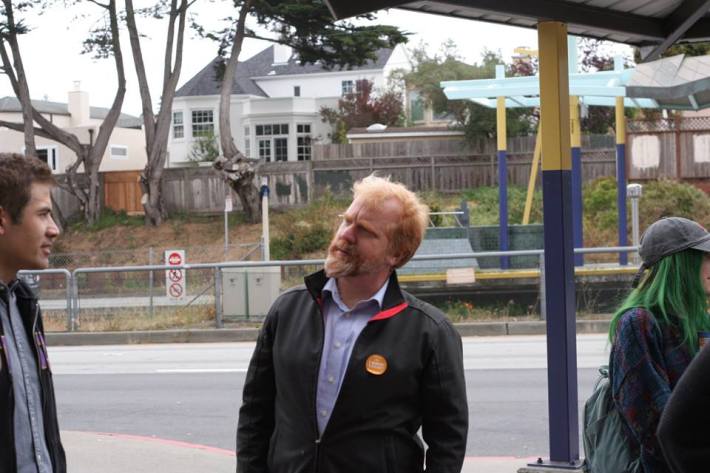SFSU Students Study How to Un-Suck Biking to BART
5:18 PM PDT on May 25, 2016
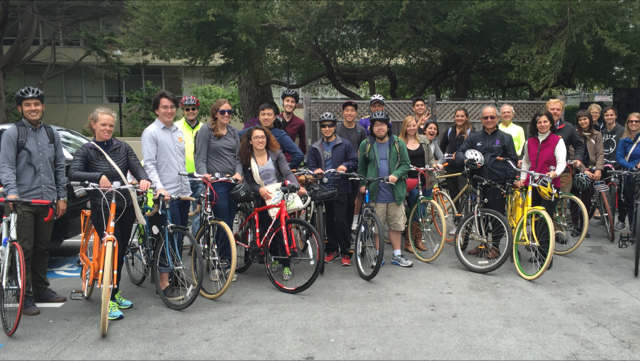
Professor Jason Henderson's "Bicycle Geographies" class wants the ride from Daily City BART to San Francisco State University's campus to be comfortable and fun.
And why shouldn't it be?
After all, it's only a 1.6 mile trip that should take even a novice cyclist about 15 minutes. Given the proximity to BART, this should be a no-brainer. But thanks to some harrowing intersections, high-speed traffic lanes, and oddly placed and timed "safety measures," it's anything but.
"That route probably felt quite calm in a big group with 40-plus people in a group ride," said Joshua Handel, one of five students in the class, during a presentation to administrators at the school. Handel is referring to a Bike to Work Day ride done earlier this month with staff and students.
"But when one does it alone, there's a lot of traffic stress," he continued.
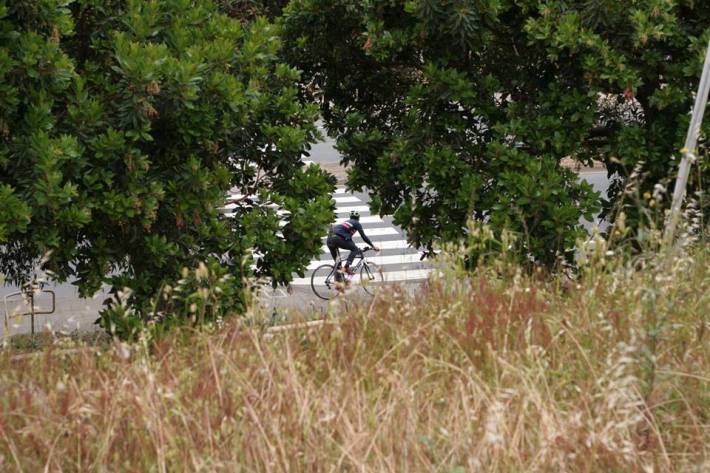
For Handel, the intersection at Alemany and St. Charles is one of the worst points, because there are "six lanes, uncontrolled, where the freeway ramps come," he explained. "It's very difficult and stressful." The intersection has stop signs and cross walks but, as he pointed out, cars don't always stop.
He recommended putting in flashing lights and signals to make cars stop more reliably. Another sore spot is the sharp grade to get down and back up from the crossing at Brotherhood Way, as seen in the photo above. The hill is a bit challenging to regular cyclists, and as Professor Henderson pointed out, if there are ever going to be bike share stations at Daly City BART and the university, they need to eliminate that grade.
"Bike share won’t work without a bridge," he said of the durable--but heavy--bike-share-style bikes: "They don’t handle hills."
To solve that, the students are suggesting a bridge, much like the Copenhagen "snake bridge," seen two photos down. "They are lightweight and cheaper than the over-engineered bridges we build for interstate highways," said Handel. "There's significant elevation gain at Brotherhood Way; at least 30 percent of riders have to walk their bikes. A bridge would eliminate a massive amount of elevation and stress."
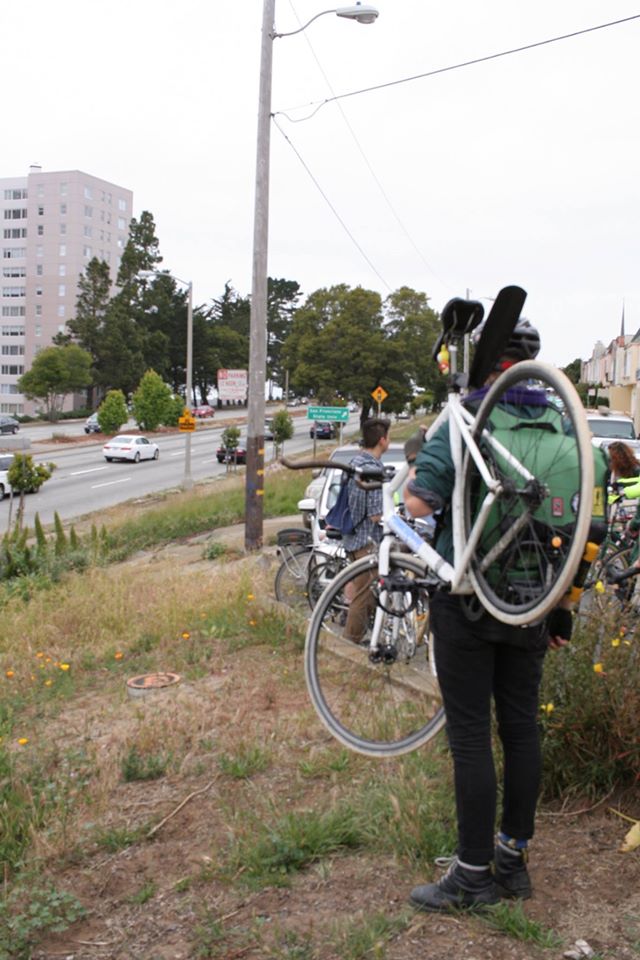

The students estimate, depending on the details, that the bridge would cost between $4.5 and $10.5 million. In one scenario they propose, it might turn into a path along Randolph and then cross Junipero Serra to Parkmerced. "We're hoping to work with Parkmerced to advocate for this," said Nick Kordesch, Sustainability Coordinator for the university.
Some will inevitably claim that a bridge is too expensive. But the students argue that, compared to the money spent on automobile improvements, $10 million is almost a pittance--and would be well worth the improved connection between the campus, Parkmerced, and the BART station. In addition, SFMTA is currently studying putting the M-Ocean View into subway tunnels to increase speed, capacity, and, ostensibly, access to the same destinations. That will cost around $3 billion, for trains that have far less speed and capacity than BART.
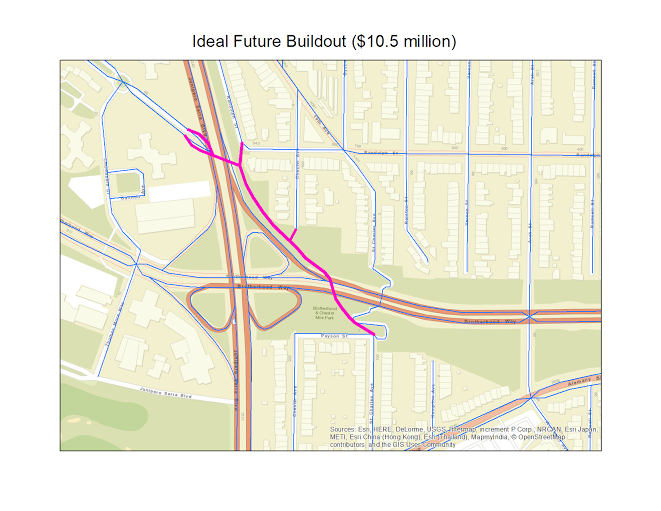
Of course, there are bus shuttles to BART, and the proposed bicycle infrastructure is also meant to reduce demand on those buses. And many of the proposed improvements suggested by the class are even simpler, such as good way-finding. Right now, there are sharrow markings that, in theory, are supposed to point student cyclists towards the BART station. But the meaning of the markings is unclear at best, especially the ones that point to and from a curb at the bottom of St. Charles Way.
Adding "BART this way" to the sharrows might help, as would a curb cut so cyclists don't have to stop and dismount where St. Charles Avenue dead-ends at Brotherhood (there's a short path that currently connects this dead end to the crosswalk at Brotherhood). "We might even be willing to pay for it," said Kordesch.
It should be stressed, by the way, that this isn't just a class assignment. As Henderson explained, the class is funded by a “Campus as a Living Lab” grant. That means the student presentation was attended by university administrators. The aim is to advocate, work with partners at the San Francisco Bicycle Coalition and SFMTA, and get improvements done both on campus and around it to increase bicycle mode share. The students even suggest the university hire a full-time Bicycle Coordinator to collaborate and plan with the city.
At this point, some Streetsblog readers will no doubt wonder why the focus is on the Daly City BART station, instead of Balboa Park. The students said the routes on Ocean and Holloway would take far more investment to make safe, in large part because of the network of train tracks and freeway ramps approaching the station.
True enough. And given the quality of the classwork, it's clear the city could learn a thing or two from these gifted students. Meanwhile, Professor Henderson, also known for his book Street Fight, will be spending the Fall semester on sabbatical studying cycle-infrastructure in Denmark. Anybody jealous?
Read More:
Stay in touch
Sign up for our free newsletter
